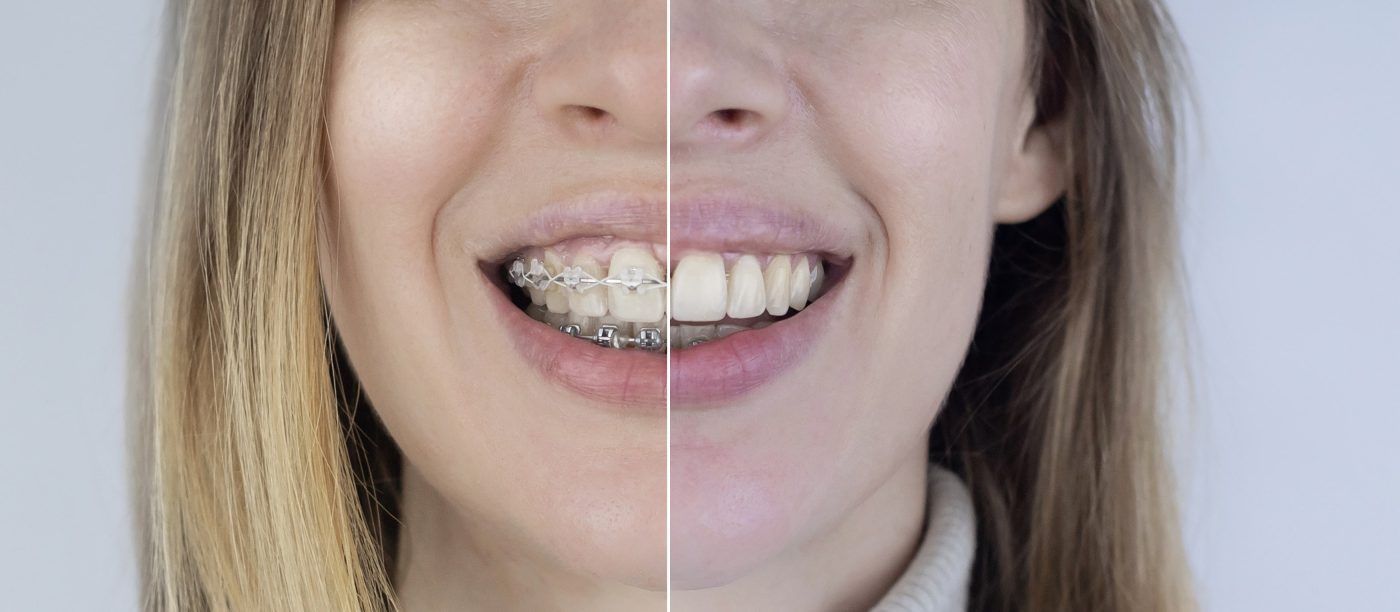As a specialist dentist, I am frequently approached by patients seeking advice on the most suitable type of braces for their needs. Both metal and ceramic braces are among the most common choices and have their respective pros and cons. In this thorough comparison, we will analyse metal and ceramic braces to assist you in determining the most appropriate option for your needs.
Metal Braces:
Metal braces have been the conventional choice for several years, made of high-grade stainless steel and composed of brackets, wires, and elastic bands. These braces are highly effective in straightening teeth and correcting bite issues, and they are suitable for patients of all ages.
Advantages of Metal Braces:
Metal braces are highly durable and can withstand significant pressure to effectively move teeth into the desired position. Another advantage is that they are more affordable (see our article on costs of teeth straightening) than ceramic braces, which makes them a popular choice for many patients.
Disadvantages of Metal Braces:
One of the most significant drawbacks of metal braces is their noticeable appearance, which can make some patients feel self-conscious and avoid social situations. Additionally, metal braces may cause discomfort and irritation to the cheeks and lips, particularly in the early stages of treatment.
Ceramic Braces:
Ceramic braces have a comparable design to metal braces, but they are composed of clear or tooth-coloured materials that blend in with the teeth, making them less noticeable (see our article on teeth straightening features and problems-). This quality makes them a popular choice among patients seeking a more discreet orthodontic treatment.
Advantages of Ceramic Braces:
The primary benefit of ceramic braces is their inconspicuous appearance, which makes them an appealing option for patients who desire a natural-looking smile during treatment. Furthermore, ceramic braces tend to be more comfortable than metal braces, as they are smoother and cause less irritation to the cheeks and lips.
Disadvantages of Ceramic Braces:
The primary disadvantage of ceramic braces is their vulnerability. They are not as sturdy as metal braces and can crack or break if not handled with care. Furthermore, ceramic braces are typically more expensive than metal braces, which may be a deciding factor for some patients.
Which Type of Braces is Right for You?
Selecting between metal and ceramic braces is based on your personal preference and orthodontic requirements. If you’re seeking an affordable and efficient orthodontic treatment, metal braces may be the best option for you. Ceramic braces may be the preferable option if you’re looking for a more subtle treatment and are willing to invest in the additional expense.
As a dental professional, I suggest consulting with an experienced orthodontist who can assess your individual needs and provide personalised recommendations based on factors such as the severity of your case, age, budget, and desired treatment duration.
To summarise, metal and ceramic braces can effectively treat misaligned teeth and bite issues. Nevertheless, each type has its advantages and disadvantages, and ultimately, the selection between the two depends on personal preference and orthodontic needs. It’s important to discuss your alternatives with an experienced orthodontist and consider the pros and cons of each type before making a final decision.
To further help you understand the differences between metal and ceramic braces, we have created a visual comparison chart:

By providing you with this guide and comparison chart, we hope to have made your decision-making process more accessible and more informed. We encourage you to ask questions, seek advice, and take the time to make the best decision for you and your unique needs.
We trust that this guide has given you the information you require to make an educated decision and achieve a beautiful, healthy smile. If you’d like to learn more about our services, please fill out a short form, and one of our friendly team members will contact you promptly.
Get In Touch
FAQs about Metal and Ceramic Braces:
- Which type of braces is less expensive? Metal braces are generally a more budget-friendly option than ceramic braces, as they are made of less expensive materials.
- Which type of braces is more comfortable? Ceramic braces tend to be more comfortable than metal braces, as they are smoother and cause less irritation to the cheeks and lips.
- Which type of braces is more inconspicuous? Ceramic braces are less conspicuous than metal braces since they blend in with the natural colour of the teeth, making them less visible.
- Which type of braces is sturdier and more long-lasting? Metal braces are sturdier and more long-lasting than ceramic braces, as they can endure more pressure and are less prone to chipping or breaking.
- What is the usual duration of orthodontic treatment with braces? The length of orthodontic treatment varies according to the severity of the case, but most individuals wear braces for one to two years.
- How often do I need to see my orthodontist during treatment? While receiving treatment, you should see your orthodontist every four to six weeks to have your braces adjusted and keep track of your progress.


